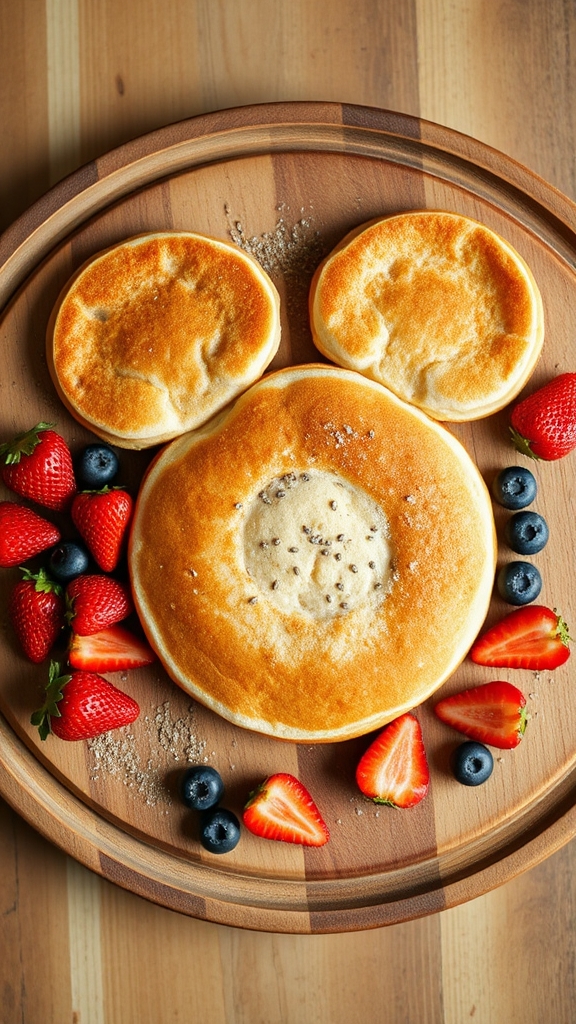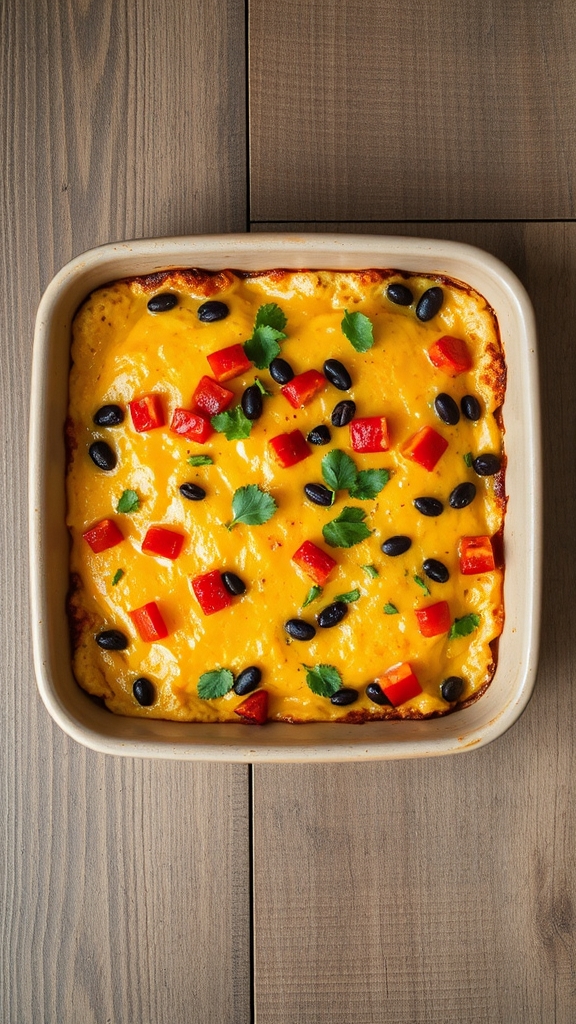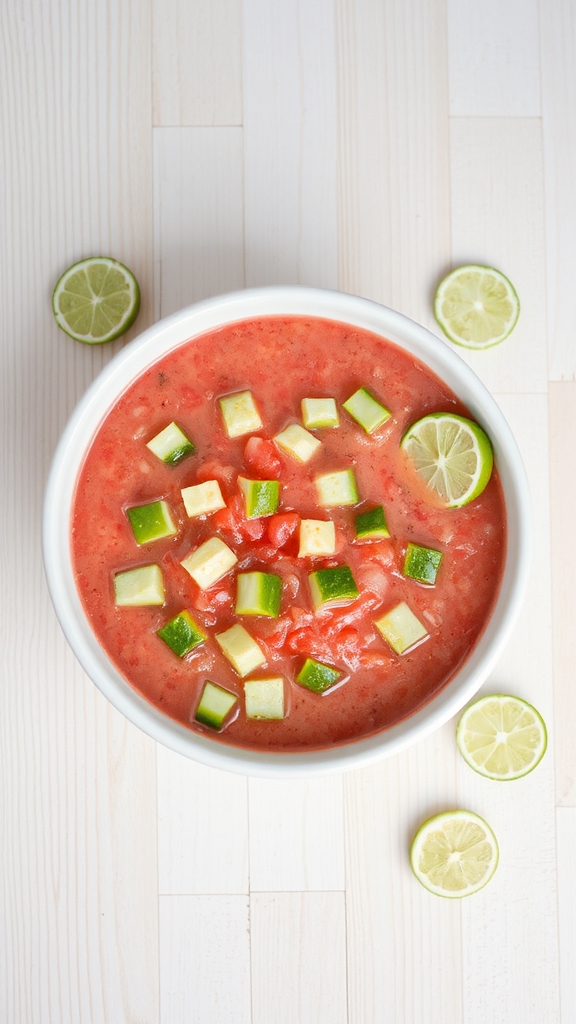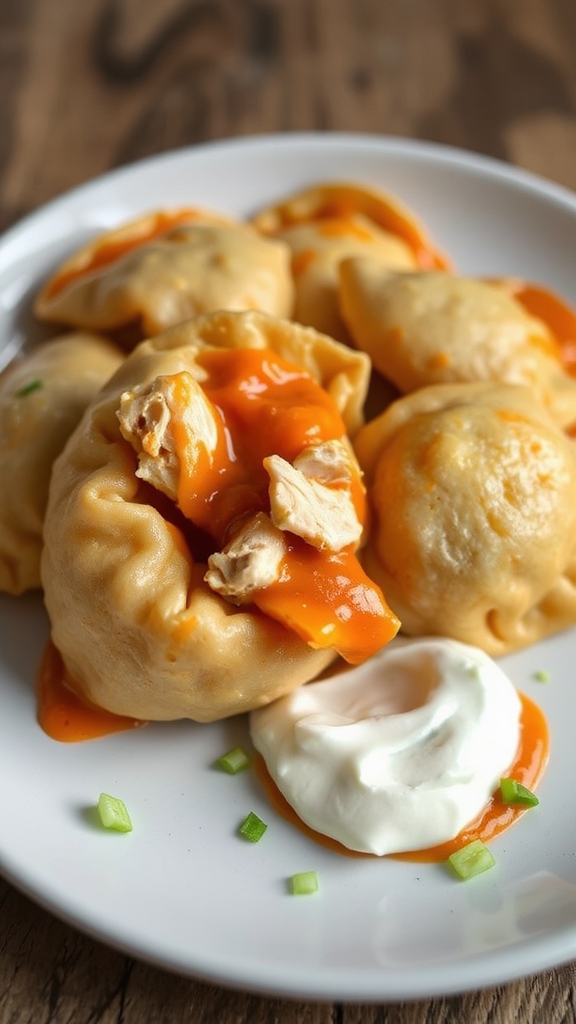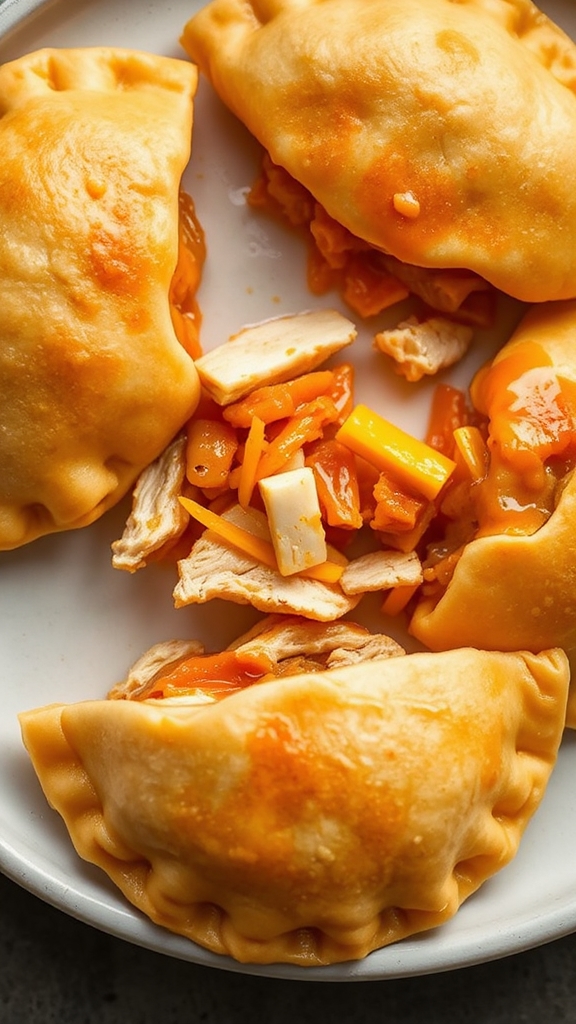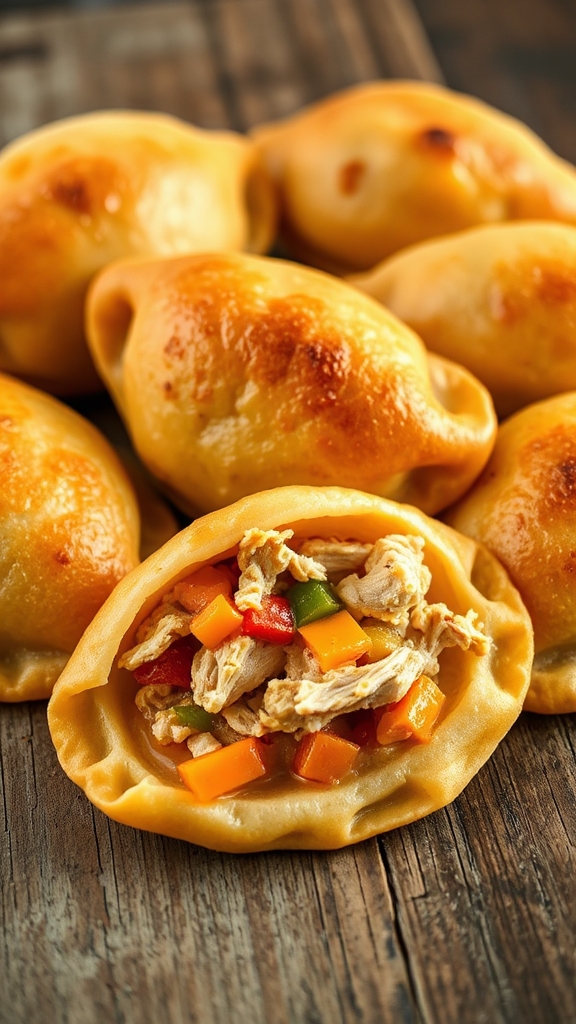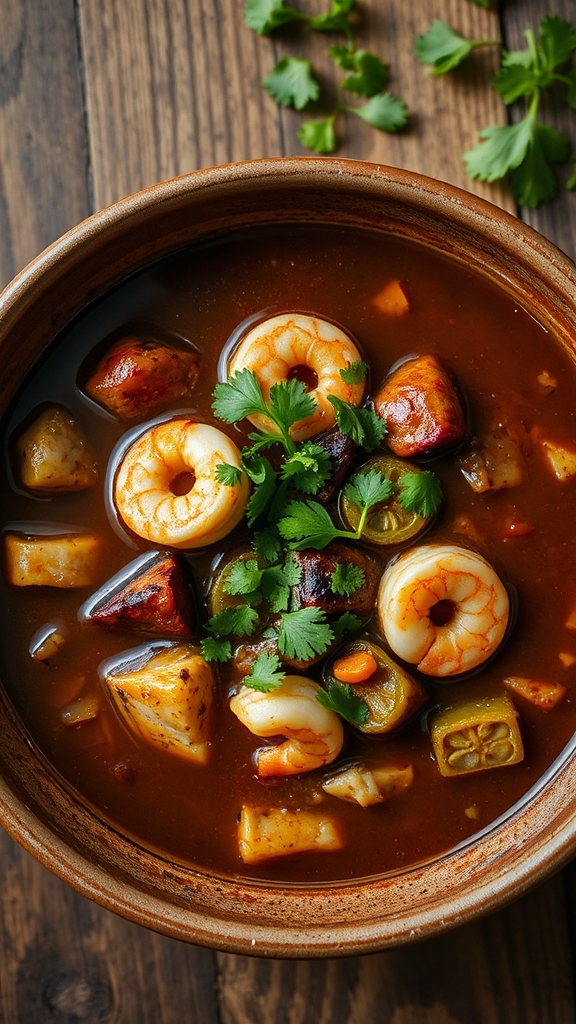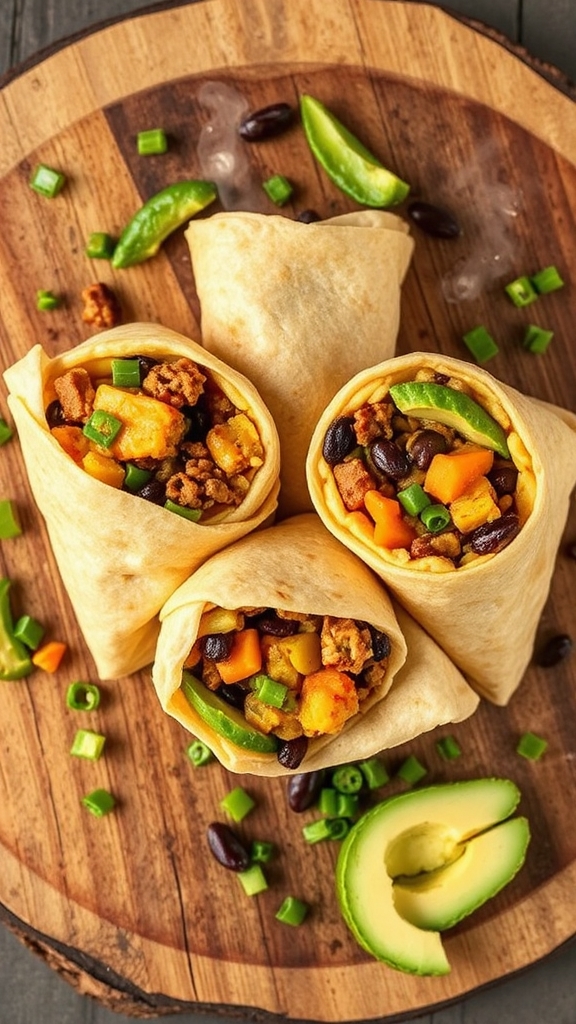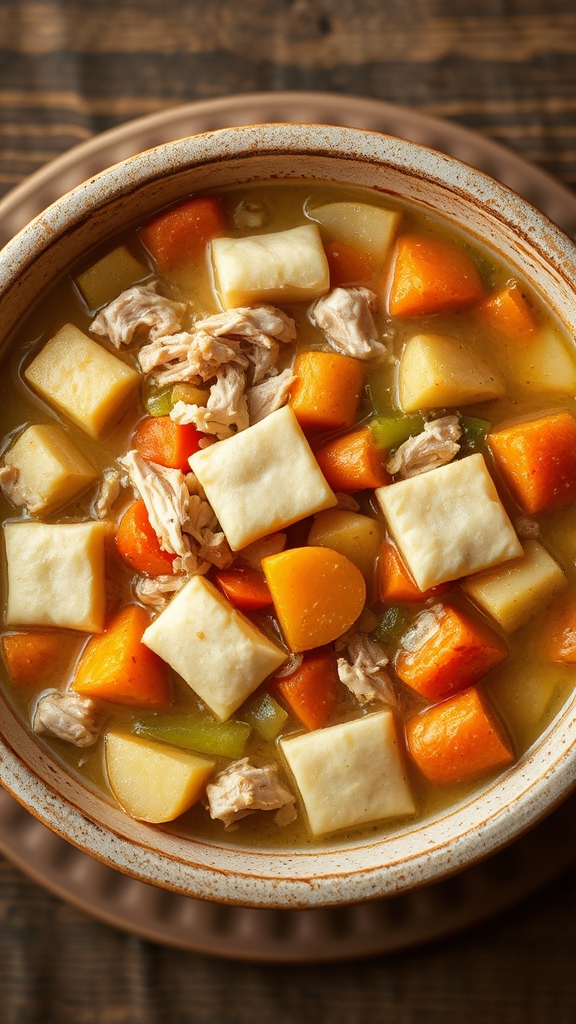Buffalo Chicken Pierogi (Upstate NY Fusion)
Lure your taste buds with a fiery fusion of Polish pierogi and Buffalo chicken—discover the crave-worthy twist that awaits!
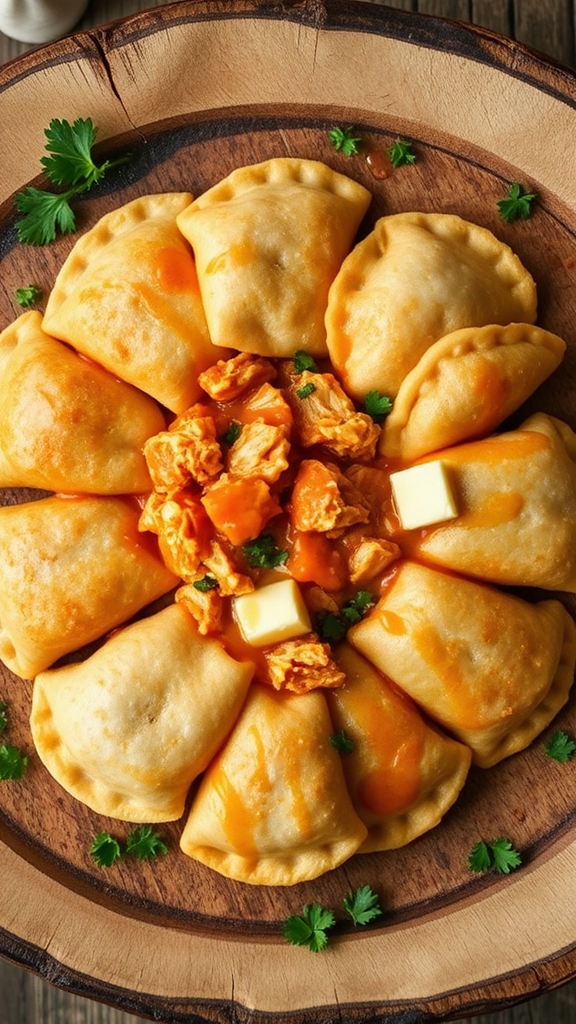
I’m thrilled to share my Buffalo Chicken Pierogi, a fun fusion of Polish pierogi heritage and Upstate NY’s spicy Buffalo wings, perfect for game days or family meals. I start with a simple dough of flour, egg, and water, then stuff it with shredded chicken mixed in tangy Buffalo sauce, cheddar cheese, and a hint of blue cheese for that classic kick. It’s an easy crowd-pleaser that’ll have you craving more—explore the rest for the full scoop!
History
Buffalo Chicken Pierogi is a creative fusion dish that blends the traditional Polish pierogi—originating from Eastern Europe as a staple of Slavic cuisine—with the spicy, tangy flavors of American Buffalo chicken wings, first popularized in Buffalo, New York, in the 1960s, symbolizing immigrant adaptations and cultural blending in the U.S.
Regional variations often incorporate local ingredients, such as different cheeses or sauces in areas with strong Polish heritage like the Midwest, signifying the dish’s role in evolving culinary traditions and community identity.
Traditionally, it appears at casual events like sports gatherings or family potlucks, where its comforting, shareable nature makes it a hit for modern celebrations.
Ingredients
- All-purpose flour: Oh, let’s start with the backbone of those tender pierogi wrappers—about 2 cups of all-purpose flour, the kind that’s always sitting in your pantry, reliable as an old friend on a rainy day. Ever wonder why it’s so versatile? It mixes up smooth and forgiving, holding everything together without a fuss, which is handy when you’re dealing with spicy surprises inside.
- Water: A humble 1/2 cup of warm water to bring that dough to life—picture it as the quiet helper that makes the flour play nice, turning a pile of dry stuff into something you can roll out without it sticking to every surface, you know?
- Egg: Just one large egg in there for richness and a bit of elasticity in the dough; it’s like that secret ingredient in family recipes that adds a touch of warmth, making you pause and think, could this be what turns a simple wrap into something memorable?
- Salt: A teaspoon of salt to wake up the flavors—nothing fancy, just the everyday kind, because who needs complications when you’re aiming for that perfect balance that teases your taste buds without overwhelming them, right?
- Boneless chicken breasts or thighs: Around 1 pound, cooked and shredded; these are the stars of the show, offering that juicy, hearty bite that says, “Hey, I’m here to make this dish fun,” even if they require a little prep work that might leave you chuckling at how finicky cutting can get.
- Buffalo sauce: About 1/2 cup of that tangy, fiery goodness—mix up your favorite hot sauce with a bit of melted butter for that classic kick, because let’s face it, what’s a Buffalo twist without a sauce that pretends to be mild but sneaks up on you, keeping things exciting in the kitchen?
- Butter: 1/4 cup, melted to blend with the sauce; it’s the smooth operator that tones down the heat just enough, like a peacekeeper in a spicy argument, and honestly, who doesn’t appreciate a little buttery comfort when things get too intense?
- Cheddar or blue cheese: 1 cup, shredded for that creamy filling; choose cheddar for a mellow vibe or blue for a punchier edge—it’s the cheese that whispers, “Add me and watch the magic happen,” though I suppose it’s easy to overdo it and end up with a gooey mess that mocks your measuring skills.
- Onion: One medium onion, finely chopped and sautéed for a touch of sweetness; it’s that underappreciated veggie that sneaks in flavor without stealing the spotlight, making you wonder, how did something so simple elevate the whole filling like that?
- Garlic: 2 cloves, minced, because garlic is like that chatty neighbor who shows up unannounced but always improves the party—add it to the mix for a robust depth that says, “This isn’t just any pierogi anymore.”
- Optional veggies, like celery or carrots: A handful, diced small for extra crunch; they’re the sidekicks that bring a fresh contrast to the heat, sort of like tossing in a surprise element that keeps the dish from being too one-note, even if it means a little extra chopping that could trip up your rhythm.
- Sour cream or ranch dressing for serving: A dollop on top, maybe 1/2 cup total; it’s the cooling finish that balances the spice, making you think, why fight the fire when you can tame it with something creamy and unpretentious, turning each bite into a harmonious little adventure?
There you have it, folks—a lineup of ingredients that’s as approachable as a casual chat over coffee, pulling together the best of traditions with a playful nod to flavor experiments, because who says cooking can’t be a bit of a whimsical ride?
Cooking Steps
Let’s plunge into the fun part of turning those simple ingredients into tasty, stuffed pierogi that’ll have you wondering why you don’t make them more often.
Start by making the dough: combine 2 cups of all-purpose flour with 1/2 cup of warm water, one large egg, and a teaspoon of salt in a bowl, then mix until it forms a smooth, elastic ball—think of it as wrangling a playful puppy that might stick to your fingers if you rush.
Roll out the dough on a floured surface to about 1/8-inch thick, cut it into circles using a glass or cutter, and set them aside while you tackle the filling, because who knew something so basic could feel like a little kitchen adventure.
Next up, prepare that zesty filling to give your pierogi some real personality.
Cook and shred 1 pound of boneless chicken breasts or thighs until they’re tender and easy to handle, then mix them with 1/2 cup of buffalo sauce and 1/4 cup of melted butter for a tangy heat that sneaks up on you like an unexpected guest.
Stir in 1 cup of shredded cheddar or blue cheese and one medium onion that’s been finely chopped and sautéed until soft, creating a creamy mixture that’s just begging to be stuffed inside—it’s the kind of step where you might sneak a taste and chuckle at how it already hits the spot, even before assembly.
Finally, assemble and cook your pierogi like you’re wrapping up a surprise package.
Place a spoonful of the chicken filling in the center of each dough circle, fold it over, and seal the edges with a fork or your fingers, making sure not to overfill or you’ll end up with a messy leak that teases your skills a bit.
Boil them in salted water for about 3-5 minutes until they float, or pan-fry in a little butter for a crispy twist; either way, serve hot and watch how this combo of dough and spice turns into a crowd-pleaser that makes you rethink ordinary dinners.
Tips and Variations
If you’re tweaking your buffalo chicken pierogi for a crowd or just shaking things up in the kitchen, try swapping out the traditional cheddar for a milder mozzarella to tame that spicy kick, or amp up the fun by mixing in some diced bell peppers for a colorful crunch that adds a playful twist without overwhelming the tangy buffalo vibe—after all, who says pierogi can’t get a little adventurous.
For a lighter variation, use Greek yogurt instead of butter in the filling to keep it creamy yet waistline-friendly, and if you’re feeling extra creative, brush the cooked pierogi with a honey-laced butter for a sweet-heat surprise that might just make you pause and wonder why simple dinners can’t always feel this delightfully chaotic, especially when you’re pinching those edges and hoping they seal just right to avoid a minor filling fiasco.
Oh, and for storage, pop any leftovers in the fridge for up to three days, then reheat in a skillet with a dab of oil to recapture that crispy edge, because let’s face it, second-day pierogi can still steal the show if you give them a little extra love.
Tools
| Tool | Purpose |
|---|---|
| Large mixing bowl | For combining dough and filling ingredients |
| Measuring cups | For accurately measuring dry and liquid ingredients |
| Measuring spoons | For precise measurement of smaller quantities like spices |
| Rolling pin | For rolling out the dough to the desired thickness |
| Sharp knife | For cutting dough into circles or shapes, and chopping ingredients |
| Cutting board | For safely preparing and chopping ingredients like chicken and vegetables |
| Pot | For boiling water to cook the pierogi |
| Skillet or frying pan | For frying the pierogi after boiling to achieve a crispy texture |
| Slotted spoon | For safely removing pierogi from boiling water |
| Fork | For mixing dough and sealing the edges of the pierogi |

Hi There! I'm Stephanie Miller: Elementary teacher from Columbus, OH sharing grandma's treasured American recipes! 50 years young, yoga enthusiast & kitchen storyteller. Welcome to my food family! 🍰❤️


